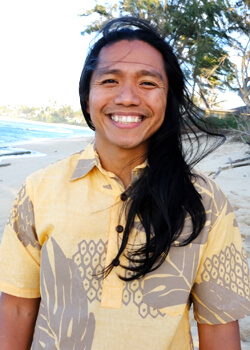Column by University of Hawaiʻi Maui College Chancellor Lui Hokoana was published by The Maui News on October 24, 2024.

We’ve been waiting a long (long!) time to welcome a full-time Ilokano Language and Amianan (Northern Indigenous communities) Instructor to our campus. And we’re thrilled that Dr. Jeffrey Tangonan Miguel Acido is finally here. We’ll tell you about his fascinating journey after we tell you some of the history of the University of Hawaiʻi’s Pamantasan Initiative which brought him to us.
The UH Pamantasan Council (“Pamantasan” means institute of higher learning) was formed in 1987 by a passionate group of Filipino staff, faculty, students and community members. The Council’s purpose was to review the status of Filipinos at the university and to make recommendations on ways to increase the number of Filipino students, improve their academic success, and ensure that the Filipino experience—language, culture, comradery—was flourishing on all ten campuses. One of the recommendations was to hire two full-time instructors/council members. But the group was a completely volunteer organization with no budget. More than three decades later, the State Legislature appropriated the funding…and then came COVID. Like everything else, the long-awaited implementation of the program was put on indefinite hold. Until this semester.
It was a long road for the initiative, to be sure; Acido’s road was even longer. He was born in a remote, rural town in Bacarra, Ilocos Norte in the Northern Philippines. “I was raised in a farming village. My grandfather and I would ride together on his water buffalo each morning to tend the land,” Acido says. “We never had to buy vegetables, or rice, or livestock. I knew what it meant to ‘live off the land.’” His family spoke only Ilokano. They refused to speak Spanish and did not speak Tagalog either. “My grandmother was insisted on using Ilokano to name her world,” he says.
Acido was four years old when his family moved to Hawaiʻi. “We were waitlisted for the Kuhio Park Terrace (KPT ) public housing so we stayed in Kalihi, hoping to get in. But we ended up just living around the towers in lower Kalihi. I attended Kalihi public schools and Honolulu Community College before earning my BA Degree in Religion from UH Mānoa.” His area of study was the spirituality of communities.
Acido’s Master’s Degree is from the Pacific School of Religion in Berkeley, California. He came home to Hawaiʻi to get a PhD in Education researching indigenous and Ilokano-Filipino pedagogies. “Studying the spirituality of communities helped me understand early on that education has to tap into the sacred, has to awaken what is possible, even if it hasn’t been experienced yet,” Acido explains.
As varied and far-reaching as his accomplishments are, service to education, language and culture ever present. “I taught at UH Mānoa in the Ilokano and Tagalog Program as well as in the College of Education,” Acido says. “I also directed the Hawaiʻi Undergraduate Initiative at UH Mānoa and ran the Sulong Aral program at Leeward Community College.” All of these programs serve under-represented and under-served communities.
“For about five years I directed a young men and boys mental health and well-being program at Kōkua Kalihi Valley with the Movember Foundation,” Acido continues. “In Seattle, I taught ethnic studies at Seattle Central College and while in California I worked with the Prevention Institute doing mental health support for community leaders while teaching Humanities courses at a local community college.”
Here at UHMC, Acido aims “to create pedagogical spaces that empower students of Filipino ancestry to see themselves as people who matter.” He adds, “My role in the program at UHMC will encourage the next generation of Ilokano-Filipinos to stand proud in their own heritage, to keep the Ilokano language alive and thriving. Our people undervalue our language and would rather speak Tagalog or English. The UHMC program seeks to change the colonial mentality and hegemony of those languages.”
Acido also remains in service to his wider community, specifically in Lāhaina. He is part of Kaibigan Ng Lahaina, a non-profit organization which advocates for equitable and liberative programs that serve the Filipino, immigrant, and indigenous communities. And he works with the Nakem Conferences in Hawaiʻi and the Philippines to advocate for indigenous languages to be taught in school.
Acido is, obviously, passionate about preserving native and indigenous languages and cultures. He is proud that UHMC is one of only two places in the world—the other is UH Mānoa—where Ilokano language and culture are taught. So, yes, we waited a long time for him to get here. It was worth it.
For complete information about UH Maui College, please visit http://maui.hawaii.edu/

